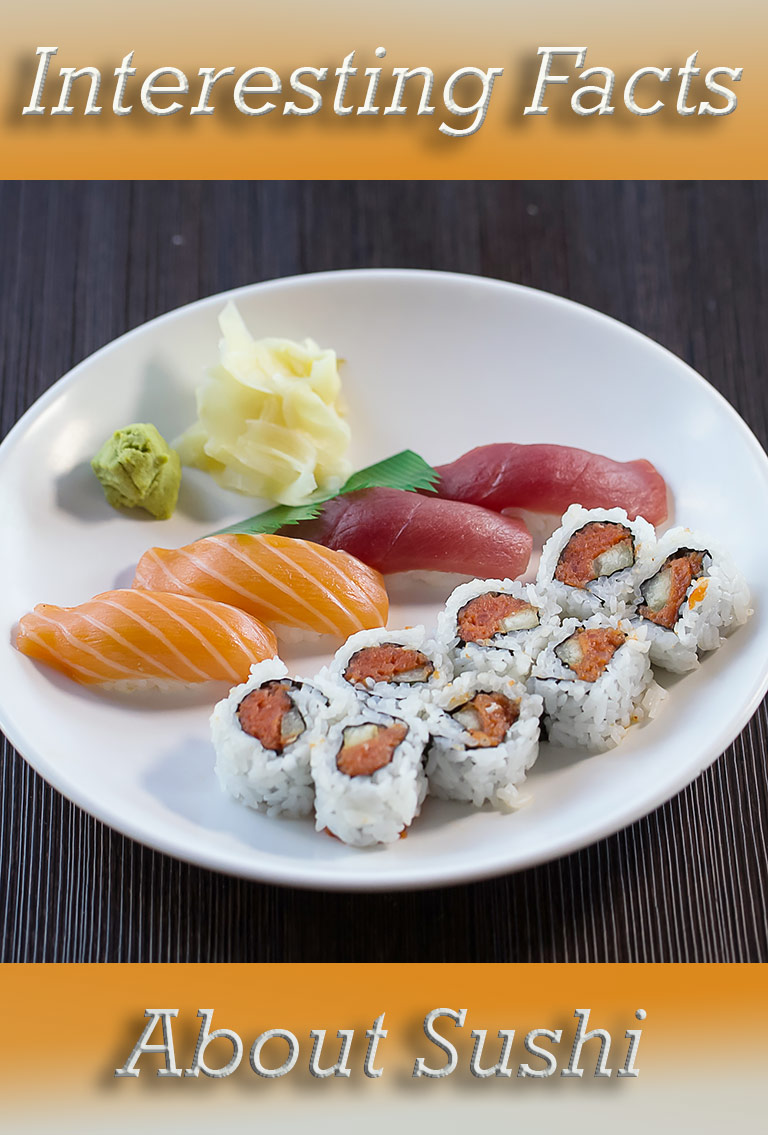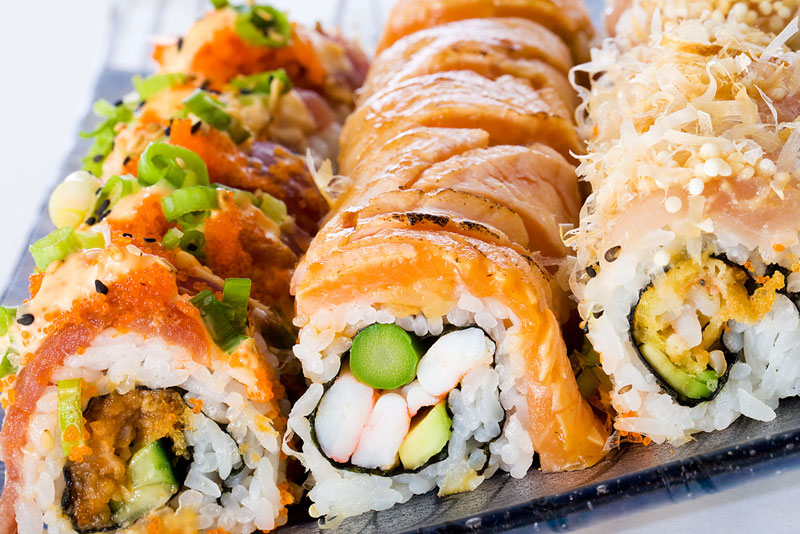
Wonderfully addictive, cultural, and artistic — sushi remains a mystery to the uninitiated. Why would anyone want to pay so much for a few tidbits of raw fish? Unlike the supermarket sushi slopped out by chains in the West, a true sushi experience is unforgettable. Masters in Japan make each bite a ride of color, texture, taste, and presentation.
These 16 interesting facts about sushi will make you even more excited about your next experience!
1. Sushi originated outside of Japan
Although the Japanese get full credit for what we call sushi today, the inspiration for sushi is thought to have started in Southeast Asia. Nare-zushi, fermented fish wrapped in sour rice, originated somewhere around the Mekong River before spreading into China and ultimately Japan.
The concept of modern-day sushi was invented in Japan by Hanaya Yohei sometime around the end of the Edo period.
2. Sushi began as cheap fast food
Sushi caught on originally as a cheap, quick snack to eat with the hands while enjoying a theater performance.
3. Your wasabi is probably not real wasabi
Real wasabi comes from the root of the wasabia japonica plant, not horseradish. The powerful burn of wasabi comes from naturally antimicrobial chemicals in the plant, the perfect compliment for consuming raw seafood which may contain parasites.
Authentic wasabi is pricey. The stuff typically provided in sushi restaurants is made from horseradish and mustard powder, then dyed green with artificial dyes to resemble real wasabi.
4. Originally, sushi rice was never eaten
Sour, fermenting rice was wrapped around fermenting fish only to aid in the process of creatingumami — a unique, sour taste. Once the fermentation process was complete, the rice was discarded and only the fish consumed.

5. Nori has some scummy origins
Nori — the seaweed used to wrap sushi — was once scraped off of wooden pier legs and even boats, then pressed into sheets and dried in the sun. Today, nori is cultivated and farmed. Western brands toast nori for safety reasons while many Japanese brands do not.
6. Sushi becomes zushi when the type is specified
If the type of sushi precedes the word, sushi mutates to zushi. For instance, maki is maki-zushi;nigiri is nigiri-zushi.
7. Puffer fish is the most dangerous sashimi
Fugu, or pufferfish, contain lethal amounts of poison in glands and organs. If a chef inadvertently scrapes one with a knife while preparing sashimi, he could potential kill his own customer. To be certified to work with fugu sashimi, chefs in Japan must undergo a rigorous training and certification process — then eat their own finished product! And yes, there have been deaths during the final exams.
For centuries, the only law pertaining to the Emperor of Japan is that he can never eat fugu because of the risk involved.
8. Maki rolls are a work of art
Forget the standard ‘Californian roll’ found at any cheap sushi outlet in the West. The ingredients for maki-zushi — sushi rolls — are chosen by masters so that taste, texture, and even colors complement each other. Rolls are served already sliced into disks so that customers can see the artistic work inside.
9. Maki-zushi gets its name from the mat
The bamboo mat that gives sushi rolls their cylindrical shape is called a makisu in Japanese. While sushi rolls are the most popular form of sushi in the West, the Japanese typically prefer nigiri — a piece of fish pressed on top of a strip of rice by hand.
10. Maki-zushi isn’t always rolled in seaweed
Although we are most familiar with sushi wrapped in black nori (seaweed), in Japan sometimes maki-zushi is wrapped in soy paper, cucumber, or egg.

11. Sushi is supposed to be eaten with the hands
True to its origins, the correct way to eat sushi is with your fingers. Chopsticks are typically only used to eat sashimi — raw slices of fish.
12. Even fresh sushi is frozen first
Food safety regulations in the US and Europe require that raw fish be frozen for a certain amount of time to kill parasites. In Europe, raw fish must have been frozen at -20 degrees Celsius for at least 24 hours. Even the freshest raw fish served in Western sushi restaurants has been frozen, which damages the original taste and texture.
Japanese sushi masters are trained to recognize potential problems such as flukes and parasites in fish and avoid serving them.
13. Wasting soy sauce is bad form
Leaving behind a small pond of soy sauce with floating rice and remnants of your meal is extremely bad form. Wasting valuable soy sauce has always been frowned upon. To enjoy sushi the Japanese way, pour the smallest amount of soy sauce possible into the sushi cup and refill it as necessary.
14. You shouldn’t dip sushi rice
If you do need to dip nigiri into your soy sauce, you should turn it over and lightly dip only the fish. Great pride and effort is put into creating sushi rice with the correct texture. Saturating the rice until it falls apart in your cup is considered very amateurish.
Sushi prepared with toppings such as roe or sweet and spicy sauces — such as that put on unagi(eel) — should never be dipped in soy sauce. To fully appreciate an authentic sushi experience, avoid drowning every piece with soy sauce. You can, however, brush additional wasabi onto each piece if you prefer them to be spicier than provided.
15. Nigiri is to be eaten upside down
Sushi connoisseurs recommend that nigiri, a slice of fish squeezed atop a strip of rice, is best enjoyed by turning it upside down and placing the fish side on your tongue. Nigiri is typically eaten with the fingers rather than chopsticks so that you can keep it together and rotate it easier.
16. You can buy the chef a drink
At the end of an authentic sushi experience, you can offer to buy the chef a shot of sake in gratitude. If he accepts, you should have one with him. Aside from the shot, avoid distracting the chef with small talk or questions about the food — he needs to focus on his art and the sharp knife!





Leave a Reply